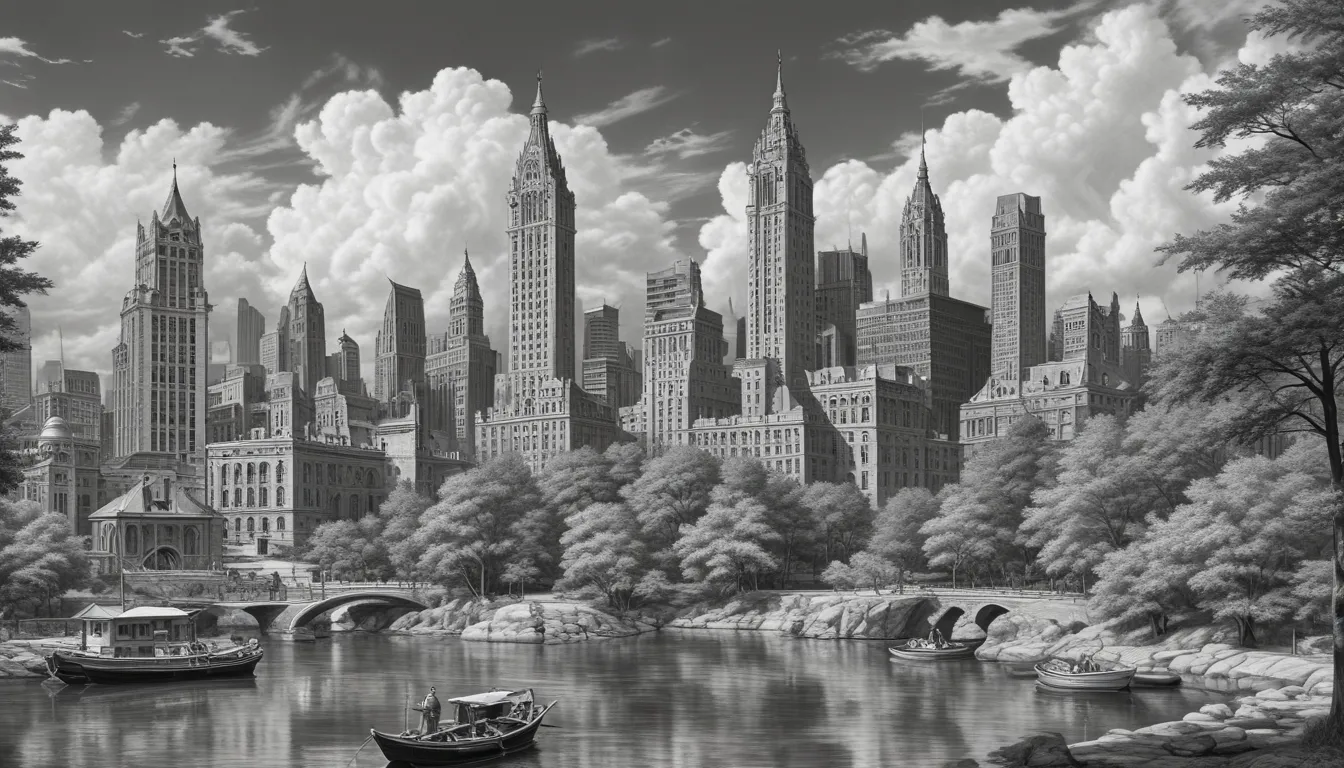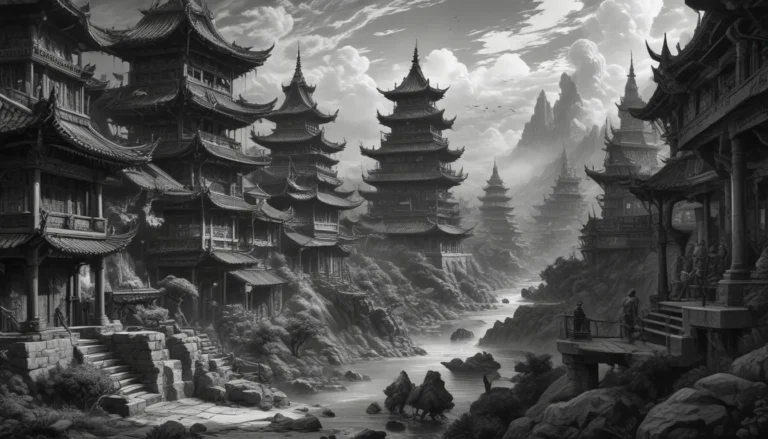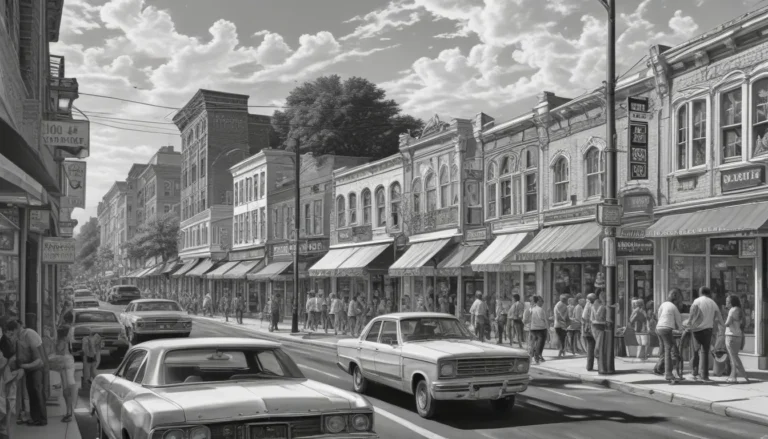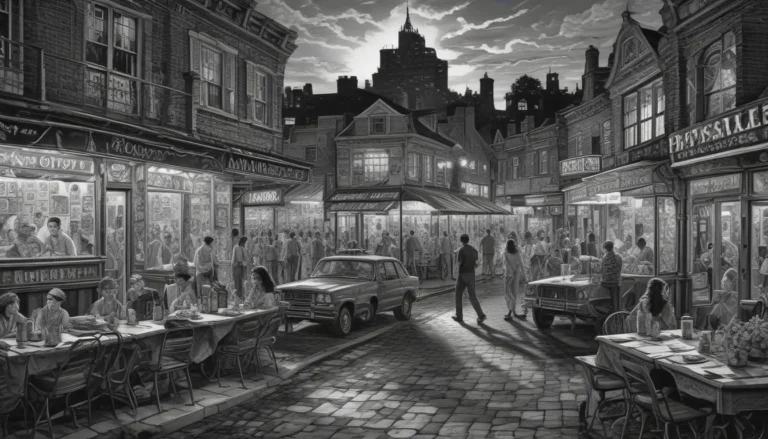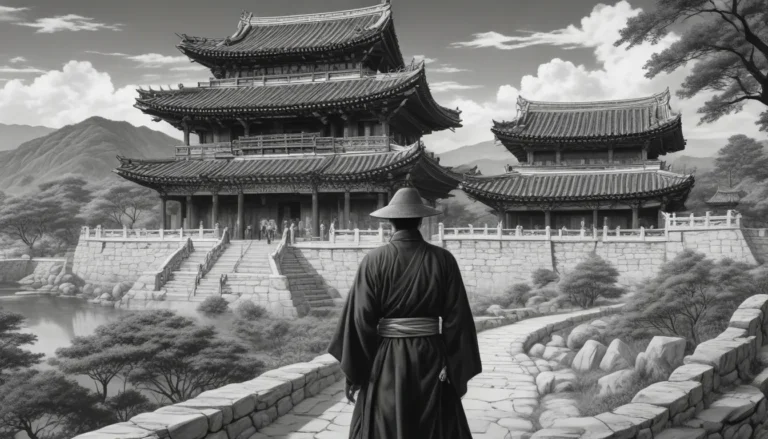The images in our articles are for illustrative purposes only and may not exactly match the content. They are intended to capture your interest and complement the text, not to replace it.
Welcome to Columbus, Ohio, a vibrant city known for its rich history and diverse cultural heritage. In this article, we will delve into the fascinating world of architectural landmarks that dot the cityscape, each telling a unique story of Columbus’s evolution and the people who have shaped it. Whether you are an architecture enthusiast, a history buff, or simply curious about the city’s heritage, you are in for a treat as we explore 14 captivating facts about some of Columbus’s most iconic architectural gems.
Unveiling Columbus’s Architectural Treasures
Columbus, Ohio, boasts a diverse array of architectural landmarks that span from historic skyscrapers to modern art spaces, showcasing the city’s rich history and vibrant cultural heritage. Visitors to Columbus can immerse themselves in a world of architectural marvels, including the majestic Ohio Statehouse, the historic LeVeque Tower, and the enchanting Topiary Park. Each of these landmarks offers a unique blend of art, history, and natural beauty, creating an unforgettable experience for all who explore them.
Ohio Statehouse: A Symbol of History and Heritage
The Ohio Statehouse, completed in 1861, stands as a magnificent example of Greek Revival architecture that symbolizes Ohio’s rich history and political legacy. With its grand cupola and elegant colonnade, the Statehouse is a stunning sight to behold, showcasing the state’s commitment to preserving its architectural treasures and honoring its democratic principles.
LeVeque Tower: A Historic Art Deco Icon
The LeVeque Tower, a historic Art Deco skyscraper completed in 1927, is a beloved landmark in Columbus that stands 47 stories tall. Its timeless design and historical significance have made it an integral part of the city’s skyline for nearly a century, capturing the hearts of residents and visitors alike with its beauty and grandeur.
Ohio Theatre: A Masterpiece of Spanish Baroque Architecture
Originally opened in 1928 as a movie palace, the Ohio Theatre is a stunning example of Spanish Baroque architecture, adorned with intricate detailing and opulent decor. This iconic venue has hosted countless performances and events, enchanting audiences with its captivating design and timeless elegance that transport visitors to a bygone era of glamour and sophistication.
Wexner Center for the Arts: A Hub of Contemporary Creativity
Designed by renowned architect Peter Eisenman, the Wexner Center for the Arts is a cutting-edge architectural marvel that serves as a beacon of contemporary creativity and artistic expression in Columbus. With its innovative design and diverse programming, the Wexner Center continues to inspire and captivate visitors from near and far, showcasing the city’s commitment to fostering a vibrant arts scene.
A Glimpse into Literary History at James Thurber House
The James Thurber House, once the childhood home of renowned author and cartoonist James Thurber, is a celebrated literary landmark in Columbus. This charming house offers a glimpse into Thurber’s life and work, serving as a tribute to his enduring legacy and creative contributions to American literature, inspiring visitors to explore the world of this literary icon.
Huntington Bank Building: A Symbol of Modern Architecture
Rising 37 stories above the city, the Huntington Bank Building is a prominent skyscraper in downtown Columbus that symbolizes urban sophistication and modern design. Its sleek architecture and towering presence make it a standout feature of the Columbus skyline, embodying the city’s dynamic blend of tradition and innovation in the realm of architecture.
COSI: An Engaging Science Museum Along the Scioto River
Housed in a striking modernist structure along the Scioto River, the Center of Science and Industry (COSI) offers an immersive and interactive learning experience for visitors of all ages. With its engaging exhibits and hands-on approach to science education, COSI inspires curiosity and exploration in the heart of Columbus, inviting visitors to discover the wonders of science in a fun and engaging way.
Franklin Park Conservatory: A Botanical Oasis of Architectural Beauty
Nestled within 88 acres of lush greenery, the Franklin Park Conservatory is a breathtaking showcase of horticultural splendor and architectural beauty. Its iconic glass greenhouse, designed by renowned architect Albert Kahn, is a stunning focal point that beckons visitors to immerse themselves in the wonders of the natural world, offering a serene retreat from the hustle and bustle of city life.
German Village: A Quaint Neighborhood Steeped in History
The German Village, a historic neighborhood in Columbus, exudes Old World charm and character, transporting visitors to a bygone era of cobblestone streets, brick houses, and enchanting gardens. Its timeless elegance and cultural heritage make it a must-visit destination for history enthusiasts and architecture aficionados, offering a glimpse into Columbus’s rich past and architectural legacy.
The Scioto Mile: A Scenic Urban Park Along the River
Stretching along the banks of the Scioto River, the Scioto Mile is a breathtaking urban oasis that seamlessly blends natural beauty with modern design. Its stunning fountains, landscaped promenades, and iconic bridges offer a captivating fusion of art, architecture, and the natural environment, inviting visitors to explore and embrace the vibrant spirit of Columbus in a serene setting.
Rhodes State Office Tower: A Prominent Feature of the Columbus Skyline
As the tallest building in Ohio, the Rhodes State Office Tower commands attention with its sleek modernist design and towering presence. Its distinctive silhouette and architectural prominence make it a defining element of the Columbus skyline, symbolizing the city’s growth and progress in the realm of architecture and urban development.
Topiary Park: A Living Masterpiece Inspired by Art
Inspired by Georges Seurat’s famous painting “A Sunday Afternoon on the Island of La Grande Jatte,” the Topiary Park features meticulously pruned shrubs that mimic the figures in the iconic artwork, creating a unique blend of art and nature in Columbus. This living masterpiece celebrates the intersection of art, horticulture, and creative expression, offering visitors a one-of-a-kind experience that delights the senses and stirs the imagination.
Ohio History Center: A Repository of Rich Heritage and Culture
With its striking modernist architecture and extensive collections, the Ohio History Center serves as a captivating repository of Ohio’s rich heritage and cultural legacy. From ancient artifacts to interactive displays, the center offers a compelling journey through the state’s past, providing visitors with a deeper understanding of Ohio’s historical significance and architectural evolution.
Thurber House: A Literary Center Honoring James Thurber’s Legacy
Located in the historic former home of James Thurber, the Thurber House is a literary center dedicated to preserving the renowned author’s legacy and engaging with his works. This living tribute to Thurber’s enduring impact on American literature inspires a new generation of readers and writers in Columbus, showcasing the power of storytelling and creativity in shaping our cultural heritage.
Conclusion: Embracing Columbus’s Architectural Heritage
Exploring the architectural landmarks of Columbus, Ohio, reveals a rich tapestry of history, culture, and innovation that reflects the city’s evolution and spirit. From neoclassical grandeur to cutting-edge modern designs, each landmark offers a unique perspective on Columbus’s architectural legacy, inspiring visitors and residents alike to appreciate the city’s diverse and captivating heritage. Columbus’s commitment to preserving its architectural treasures while embracing visionary new projects ensures that the city will continue to inspire and captivate for generations to come.
FAQs: Unveiling More Insights
Q: What is the most famous architectural landmark in Columbus, Ohio?
A: The Ohio Statehouse stands as one of the most renowned architectural landmarks in Columbus, serving as a symbol of the state’s history and democracy.
Q: Are there guided tours available for exploring architectural landmarks in Columbus?
A: Yes, several organizations offer guided tours that provide fascinating insights into the architectural heritage of Columbus, Ohio.
Q: Can visitors access the interiors of the architectural landmarks in Columbus?
A: Many of the architectural landmarks in Columbus welcome visitors to explore their interiors, offering a closer look at their captivating design and historical significance.
Q: Are there any modern architectural marvels in Columbus, Ohio?
A: Absolutely, Columbus boasts a collection of contemporary architectural gems that contribute to the city’s vibrant and dynamic urban landscape.
Q: How does Columbus celebrate its architectural heritage?
A: Columbus celebrates its architectural heritage through events, exhibitions, and initiatives that highlight the importance of preserving and appreciating its diverse architectural landmarks.
How Can We Help?
Our commitment to delivering trustworthy and engaging content is at the heart of what we do. Each fact on our site is contributed by real users like you, bringing a wealth of diverse insights and information. Trust in our commitment to quality and authenticity as you explore and learn with us. Thank you for joining us on this insightful journey into Columbus’s architectural marvels.
